
Simon the Sorcerer is a 1993 point-and-click adventure game developed and published by Adventure Soft, for Amiga and MS-DOS. The game's story focuses on a boy named Simon who is transported into a parallel universe of magic and monsters, where he embarks on a mission to become a wizard and rescue another from an evil sorcerer. The game's setting was inspired by the novels of the Discworld series, and incorporates parodies on fantasy novels and fairy tales, such as The Lord of the Rings and Jack and the Beanstalk. The lead character's design was inspired by that of the fictional British television character Blackadder, with the character voiced by Chris Barrie in the CD re-release.

Loom is a 1990 fantasy-themed graphic adventure game by Lucasfilm Games. The project was led by Brian Moriarty, a former Infocom employee and author of classic text adventures Wishbringer (1985), Trinity (1986), and Beyond Zork (1987). It was the fourth game to use the SCUMM adventure game engine, and the first of those to avoid the verb–object interface introduced in Maniac Mansion.
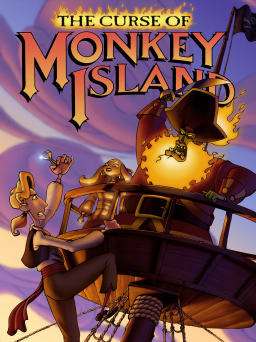
The Curse of Monkey Island is an adventure game developed and published by LucasArts in 1997. A sequel to 1991's Monkey Island 2: LeChuck's Revenge, it is the third game in the Monkey Island series.
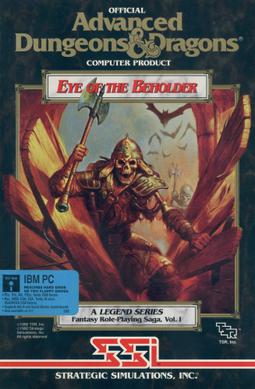
Eye of the Beholder is a role-playing video game for personal computers and video game consoles developed by Westwood Associates. It was published by Strategic Simulations, Inc. in 1991, for the MS-DOS operating system and later ported to the Amiga, the Sega CD and the SNES. The Sega CD version features a soundtrack composed by Yuzo Koshiro and Motohiro Kawashima. A port to the Atari Lynx handheld was developed by NuFX in 1993, but was not released. In 2002, an adaptation of the same name was developed by Pronto Games for the Game Boy Advance.

Superhero League of Hoboken is an adventure and role-playing video game developed and published by Legend Entertainment. Designed by Steve Meretzky, the game combines the superhero, comedy and post-apocalypse genres. It was available on both floppy disk and CD-ROM. It uses 256 color 2D graphics. It was re-released in 2019 with support for Windows, macOS, and Linux.
Simon the Sorcerer is a series of point-and-click adventure games created by British developer Adventure Soft. The series follows the adventures of an unwilling hero of the same name and has a strong fantasy setting similar to Sierra's King's Quest and Westwood's The Legend of Kyrandia series. The game varies in style, however, as it is more poised to be a parody of the fantasy genre than a member of the genre itself, with many renowned folklore characters appearing differently from what they are generally presumed to be.

Toonstruck is a graphic adventure video game developed by Burst Studios, published by Virgin Interactive Entertainment and released in 1996 for DOS. The game features hand-drawn imagery and animated characters, but the protagonist Drew Blanc is represented as a video-captured live action character interacting with the cartoon world around him. In the game, Blanc is transported into the cartoon world he created while suffering from a creative block. Blanc is accompanied by his animated sidekick Flux Wildly.

Joseph David Kucan is an American video game developer, director, actor, screenwriter, and casting director for various gaming companies and films. He is a resident of Las Vegas, Nevada. He is well known for his role as Kane from the Command & Conquer series.
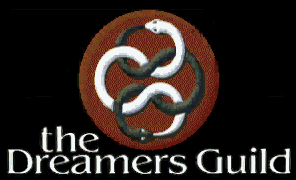
The Dreamers Guild was a north american publisher and developer of video games that operated from 1988 until 1997.
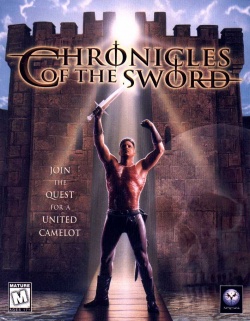
Chronicles of the Sword is an adventure game developed by Synthetic Dimensions and released by Psygnosis in 1996 for MS-DOS and Sony PlayStation platforms. The game, originally titled as King Arthur: The Quest of The Fair Unknown, is based on Arthurian legends and uses a point-and-click interface. Chronicles of the Sword tells the story of the young knight Gawain on a quest to save Camelot from the scheming witch queen Morgana. It has received largely negative reviews.

Dragon Lore: The Legend Begins, is a point-and-click adventure game released in 1994 by Cryo Interactive for MS-DOS, and later ported to the 3DO video game console. The game was a commercial success, with sales of 300,000 units by 1997. An emulated version was released for Microsoft Windows and macOS in 2013.
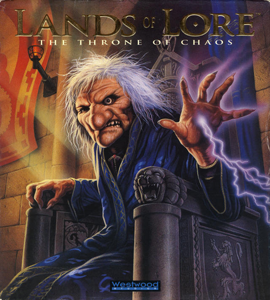
Lands of Lore: The Throne of Chaos is a 1993 role-playing video game developed by Westwood Studios and published by Virgin Games for MS-DOS, the NEC PC-9801, and FM Towns. It was the first installment of the Lands of Lore series. The player travels around various environments, collecting items and battling monsters in an attempt to save the kingdom from a witch named Scotia, who has acquired shape-shifting abilities.

The Legend of Kyrandia: Book Two - Hand of Fate is a 2D point-and-click adventure game, developed by Westwood Studios and published by Virgin Interactive Entertainment in 1993. It is the sequel to the 1992 video game The Legend of Kyrandia, and the second game of the Fables & Fiends series. The game focuses on the story of a young alchemist and magician saving the kingdom of Kyrandia from being wiped from existence.

Machinarium is a puzzle point-and-click adventure game developed by Amanita Design. It was released on 16 October 2009 for Microsoft Windows, OS X, Linux, on 8 September 2011 for iPad 2 on the App Store, on 21 November 2011 for BlackBerry PlayBook, on 10 May 2012 for Android, on 6 September 2012 on PlayStation 3's PlayStation Network in Europe, on 9 October 2012 in North America and on 18 October 2012 in Asia, and was also released for PlayStation Vita on 26 March 2013 in North America, on 1 May 2013 in Europe and on 7 May 2013 in Asia. Demos for Windows, Mac and Linux were made available on 30 September 2009. A future release for the Wii's WiiWare service was cancelled as of November 2011 due to WiiWare's 40MB limit.
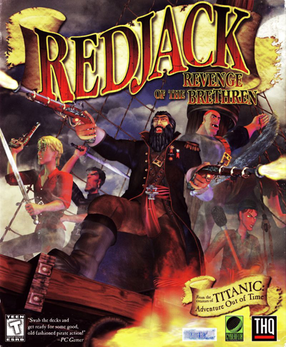
Redjack: Revenge of the Brethren is an action-adventure video game developed by Cyberflix and released by THQ for Windows and Mac OS in 1998.
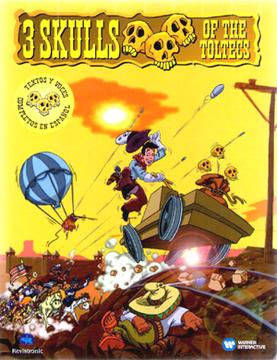
3 Skulls of the Toltecs is a point-and-click graphic adventure game designed by Revistronic for IBM PC compatibles and published by Warner Interactive Europe in 1996. The game uses a 3rd-person perspective, inventory-based puzzle solving, and horizontally scrolling cartoon graphics. 3 Skulls of the Toltecs sold 200,000 copies throughout Europe and 25,000 copies in Spain.

Nemesis: The Wizardry Adventure is a 1996 adventure and role-playing video game developed and published by Sir-Tech. It is a spin-off of the Wizardry series of games. Ports for Sega Saturn and Microsoft Windows were released in Japan in 1998.

Swigridova kletba is a 1996 Czech adventure game developed by Agawa and published by JRC Interactive for DOS.

The Legend of Kyrandia: Book One is a 2D point-and-click adventure game, developed by Westwood Studios and published by Virgin Games in August 1992. The game is the first in the Legend of Kyrandia series, and focuses on players taking on the role of a young prince who must put an end to the tyrannical chaos of an evil court jester.

















